user experience design
description: field of design focusing on the creation of user centered products and services
71 results
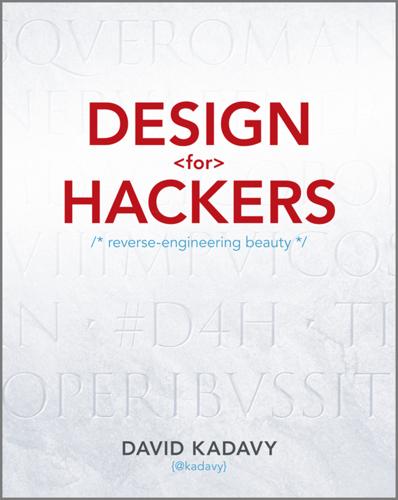
Design for Hackers: Reverse Engineering Beauty
by
David Kadavy
Published 5 Sep 2011
But to get started in understanding these various facets of visual design, you need to have some understanding of the factors that surround and shape visual design. Visual Design and Its Relation to User Experience Design Within the context of designing websites or applications, visual design is a component of the discipline of user experience design. User experience design concerns itself with anything relating to a user’s interaction with a product. User experience design attempts to make products memorable and easy to use and incorporates a number of different disciplines, including usability. Figure 2-1 is a view of visual design’s relationship with other disciplines within user experience design (in the context of websites and applications).
…
Naturally, the content of a product is what a visual designer is really trying to illuminate, while usability considerations – which strongly influence visual design – ensure that the end-user will be able to use the product effectively. Figure 2-1 Visual design is a component of user experience design and is influenced by other disciplines and components of user experience design. This diagram is very simplified, and many other related disciplines overlap with these disciplines and fall within user experience design. Disciplines such as interaction design, human-computer interaction, information architecture, cognitive psychology, and human factors all play some part in user experience design. Although I discuss products of other disciplines such as architecture and industrial design in this book, they, too, are outside the scope of my concern as I analyze the relationship between user experience design and visual design.
…
Although I discuss products of other disciplines such as architecture and industrial design in this book, they, too, are outside the scope of my concern as I analyze the relationship between user experience design and visual design. The basics of user experience design The user experience design of a product essentially lies between the intentions of the product and the characteristics of your user. The foundations of user experience really shape a product, ultimately providing constraints for visual design decisions. If I were to design a hammer, my intentions for that hammer would be that it would be used for hammering nails and maybe removing nails from time to time.
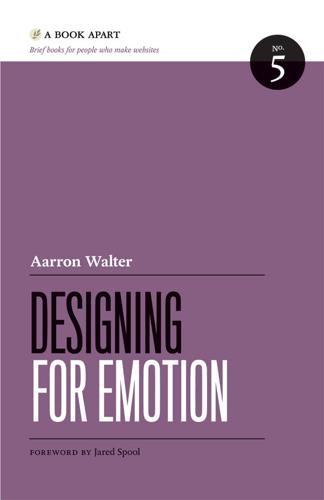
Designing for Emotion
by
Aarron Walter
Published 4 Oct 2011
John Medina provides a great deal of insight into the relationships between the way our brains are structured and the way we behave. You’ll find his book Brain Rules an interesting read (http://bkaprt.com/de/21). If you’re just getting started or still getting your bearings with user experience design, you’re certain to find A Project Guide to UX Design a useful reference (http://bkaprt.com/de/22). You’ll find a host of compelling articles exploring psychology, emotion, and user experience design at UXMag. Here are a few of my favorites: Dana Chisnell, “Beyond Frustration” (http://bkaprt.com/de/23) Susan Weinschenk, “The Psychologist’s View of UX Design” (http://bkaprt.com/de/24) Nathanael Boehm, “Organized Approach to Emotional Response Testing” (http://bkaprt.com/de/25) Trevor van Gorp looks at the role of personality in emotional design in his article “Emotional Design with A.C.T.: Part 1” (http://bkaprt.com/de/26).
…
We’ll see practical, real-world examples designed to inspire and support your case for employing emotional design in your next project. I’ll even share a bevy of data to help you make an empirical case for emotional design. Keep in mind that ignoring human needs is not a history we are doomed to repeat. Through our designs, we can see and connect with other human beings. So where do we start? Well, like any good user experience designer, we begin by understanding the needs of the people we’re designing for. Hello, Maslow In the 1950s and 60s, the American psychologist Abraham Maslow discovered something that we all knew but had yet to put into words: no matter our age, gender, race, or station in life, we all have basic needs that must be met.
…
Corner radii are generous, creating a cartoony feel. Even if you’ve never met the guys who made this app, you know what makes them tick when you log into your account. Their voice and perspective comes through in their designs. Wufoo is a piece of software, but it feels like a living, breathing human being. Kevin Hale, the user experience design lead and co-founder of Wufoo, considered the emotional state of Wufoo users when conceptualizing the design. The inspiration for our color palette came from our competitors. It was really depressing to see so much software designed to remind people they’re making databases in a windowless office, and so we immediately knew we wanted to go in the opposite direction.
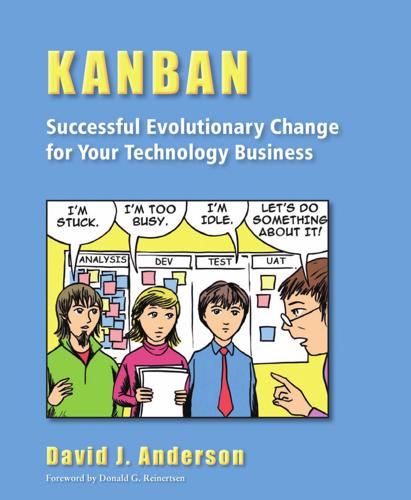
Kanban: Successful Evolutionary Change for Your Technology Business
by
David J. Anderson
Published 6 Apr 2010
The next way to ensure maximum exploitation of our capacity-constrained user-experience designer is to ensure that she is always making progress on current work. If the user-experience designer reports that she is blocked for some external reason, the project manager and, if necessary, the whole team should swarm on the issue to get it resolved. A strong organizational capability at issue identification, escalation, and resolution is essential for effective exploitation of capacity-constrained bottlenecks. If there are several issues blocking current work, then the issues impeding the capacity-constrained resource, in this case our user-experience designer, should get highest priority.
…
It turns out that elevating a capacity-constrained resource ought to be the last resort. Increasing the capacity of a bottleneck costs both time and money. If, for example, we have to hire another user-experience designer, we need to find the budget to pay this new person as well as the budget to fund the hiring process, which would include any fees we may pay agents for referrals. We will slow the progress on our current project while we review résumés and interview candidates. Our most precious resource, our capacity-constrained user-experience designer, will be asked to take time out from real project work to read résumés, select candidates, and then interview them. As a result, her capacity to complete designs is reduced, as is the potential throughput for our whole project.
…
While the team waits for new requirements to be developed, the user-experience designer is idle. What if the upstream activities are highly variable in nature? This is common with requirements solicitation and development. Hence, the arrival rate of work to be done may be irregular. There could be many reasons that the capacity-constrained resource may become idle due to a temporary lack of work. The most common way to avoid such idle time is to protect the bottleneck resource with a buffer of work. The buffer is intended to absorb the variability in the arrival rate of new work queuing, in this example, for our user-experience designer. Buffering adds total WIP to our system.

User Friendly: How the Hidden Rules of Design Are Changing the Way We Live, Work & Play
by
Cliff Kuang
and
Robert Fabricant
Published 7 Nov 2019
We travel backward and forward in time, from the paradigm shifts that made user-friendliness into something people cared about at all to the present day, when user-friendliness has redefined nearly every minute of our waking lives. Many of the ideas in this book will be familiar to user-experience designers—the people who observe our lives so that they might invent new products. Still, this story should be new. User-experience design, which has come to encompass everything from theme parks to chatbots, simply hasn’t had a narrative thread comprehensible to both laymen and experts. The great chain of ideas that spawned it typically hasn’t been appreciated as a tapestry of personalities, happenstance, and ideological struggle.
…
Alan Cooper, the eminent user-experience designer who came up with the idea of user personas, has called this the Oppenheimer moment for product design.27 Oppenheimer had helped birth the atomic bomb so that the United States might end World War II. But once he saw the first mushroom cloud at the Trinity test, he realized that the intent behind what he’d created was irrelevant in the face of how people used that creation. “Today, we, the tech practitioners, those who design, develop, and deploy technology, are having our own Oppenheimer moments,” Cooper once told a crowd of user-experience designers working in a field he himself had helped invent.
…
This book is an attempt to paint a picture that’s gone missing in plain sight. It began as an idea first broached with me by Robert Fabricant, who at the time was vice president of creative at the firm Frog Design. We’d known each other for a couple of years, and Robert’s pitch, which mirrored a decade of my own work as a writer and an editor, was simply that user-experience design, which had been the province of computer geeks and futurists, wasn’t a niche anymore. In an era in which 2.5 billion people own smartphones, user experience now occupies the center of modern life, remaking not just our digital lives but also business, society, even philanthropy. It was Robert’s idea to call this book User Friendly—a term whose very familiarity proves the thesis.
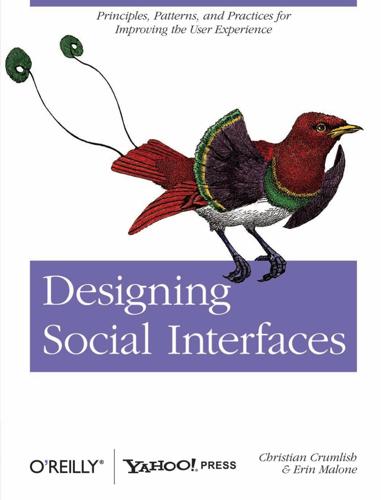
Designing Social Interfaces
by
Christian Crumlish
and
Erin Malone
Published 30 Sep 2009
They can be combined with other patterns as well as other pieces of interface and content to create an interactive user experience. They are technology and visually agnostic, meaning we do not prescribe particular technological solutions or visual design aesthetics in the patterns. User experience design patterns give guidance to a designer for how to solve a specific problem in a particular context, in a way that has been shown to work over and over again. The notion of using interaction design patterns in the user experience design process follows the model that computer software programming took when it adopted the concepts and philosophies of Christopher Alexander. Alexander, an architect, wrote the book A Pattern Language.
…
Likewise, the organizers of BayCHI’s monthly program and Ignite SF also provided opportunities to rehearse some of the ideas about social patterns, social anti-patterns, antisocial patterns, and so on, over a series of presentations. I’d like to thank my family and friends who also cut me a great deal of slack as I became incommunicado at best and irritable at worst. I’d also like to thank Micah Laaker, who runs the user experience design team for the Yahoo! Open Strategy (where I work) and contributed an essay on openness to Chapter 17. Among our essayists, I’d also like to single out Matte Scheinker, a mentor to me while he was still at Yahoo! and contributor of a nuanced essay on the ethical implications of this type of design work.
…
11 In addition to developing this language of elemental repeatable patterns, he was concerned with the human aspect of building. In a 2008 interview, Alexander says that his ideas “make [homes] work so that people would feel good.” This human approach and concern for the person (as user) is part of what has appealed to both software developers and user experience designers. The idea of building with a pattern language was adopted by the computer software industry in 1987, when Ward Cunningham and Kent Beck began experimenting with the idea of applying patterns to programming. As Ward says, they “looked for a way to write programs that embraced the user, where users felt supported by the computer program, not interrogated by the computer program.”

Don't Make Me Think, Revisited: A Common Sense Approach to Web Usability
by
Steve Krug
Published 1 Jan 2000
And there were essentially two “professions” that focused on making Web sites more usable: Usability (making sure things are designed in a way that enables people to use them successfully) and Information Architecture (making sure the content is organized in a way that allows people to find what they need). Now the term you hear most often is User Experience Design, or just User Experience (UXD or UX, for short), and there are probably a dozen specialties involved, like Interaction Design, Interface Design, Visual Design, and Content Management—and, of course, Usability and Information Architecture—all under the UX umbrella. One difference between User Centered Design and User Experience Design is their scope. UCD focused on designing the right product and making sure that it was usable. UX sees its role as taking the users’ needs into account at every stage of the product life cycle, from the time they see an ad on TV, through purchasing it and tracking its delivery online, and even returning it to a local branch store.
…
Usability went mainstream. In 2000, not that many people understood the importance of usability. Now, thanks in large part to Steve Jobs (and Jonathan Ive), almost everyone understands that it’s important, even if they’re still not entirely sure what it is. Except now they usually call it User Experience Design (UXD or just UX), an umbrella term for any activity or profession that contributes to a better experience for the user. It’s great that there’s now so much more emphasis on designing for the user, but all the new job descriptions, subspecialties, and tools that have come along with this evolution have left a lot of people confused about what they should actually do about it.
…
And each one is optimized to create things that look good. Building delight into mobile apps has become increasingly important because the app market is so competitive. Just doing something well isn’t good enough to create a hit; you have to do something incredibly well. Delight is sort of like the extra credit assignment of user experience design. Making your app delightful is a fine objective. Just don’t focus so much attention on it that you forget to make it usable, too. Apps need to be learnable One of the biggest problems with apps is that if they have more than a few features they may not be very easy to learn. Take Clear, for example.
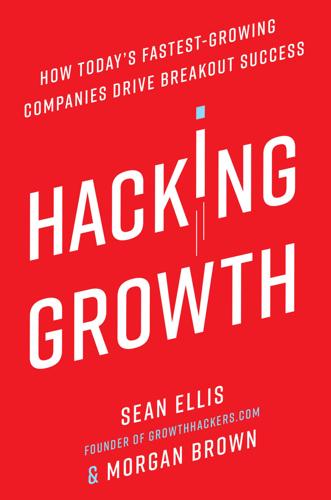
Hacking Growth: How Today's Fastest-Growing Companies Drive Breakout Success
by
Sean Ellis
and
Morgan Brown
Published 24 Apr 2017
In software development, the specialty field of user experience designer is responsible for developing the screens and sequences that users experience with the software. For manufactured goods, this designer might be responsible for the product drawings and specifications, while at other companies, designers might be chiefly involved in graphic design of advertisements and promotions. Having design experience on a team often improves the speed of execution of experiments, because the team has a dedicated staff person to immediately produce whatever design work may be involved. User experience designers can also offer important insight into user psychology, interface design, and user research techniques that can help to generate great ideas for testing.
…
For example, the engineers will take charge of any coding needed for an experiment; the designer will craft any design elements needed; the data analyst will work on selecting the sets of users with whom a change will be tested; and the marketing member will take charge of implementing any experiments with promotional channels, such as with a new Facebook ad campaign. If there is a user experience designer on the team, that person might be charged with collecting and evaluating user feedback about the types of features they find most valuable, and bringing that qualitative information back to the team. That research might lead to an idea for a change to a feature or to a new feature to experiment with.
…
The results of the program have been extraordinary, adding additional people to the site’s monthly active user (MAU, pronounced “mao”) count.9 A product-led team might also be asked to experiment with a range of ways to drive growth across all levels of the growth funnel, from attracting more customers, to improving retention, to increasing the amount of revenue being made from them. Typically in organizations that use this model, each product manager runs a small product team that includes engineers, user experience designers, and data analysts, and it’s not uncommon for a product group to have a handful of such small teams. This model is easier to implement in an established firm or a later stage start-up because it fits into the already existing management structure. This not only means that less reorganization is required, but it helps to mitigate friction in scheduling growth experiments into the existing roadmap for testing product features in development.
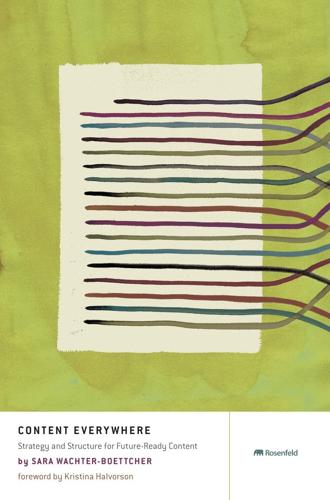
Content Everywhere: Strategy and Structure for Future-Ready Content
by
Sara Wachter-Boettcher
Published 28 Nov 2012
If so, as you strive for content that’s useful, meaningful, and sustainable, this book will help you think about all the places that content might go: desktop computers, yes, but also mobile devices, read-later applications, social media platforms, and myriad other places we haven’t even thought about yet. Or, you might be an information architect or user experience designer tasked with structuring websites and designing navigation systems. In addition to designing macro systems for information, this book will show you how to construct more micro systems: structures within a single piece of content that allow you to do much more with it, from creating deep connections within a single site to building multiple products off the same core base of content.
…
If you want content to communicate a message, tell a story, or do something specific for your organization or your users, then you need someone who understands what the content means and how it means it there when you’re making content modeling decisions. Oftentimes, the ideal person to play this role is a content strategist, editor, information architect, or user experience designer. The good news is, it’s not either-or. Content modeling and structuring can and should be collaborative—something that’s more effective when people from multiple perspectives are involved. In Chapters 3 and 4 of this book, I aim to show those who may not have been in those conversations in the past how to get started.
…
In July of 2011, a relatively unknown content strategist named Sara Wachter-Boettcher posted the following statement to her brand-new blog: “I’m not a subject matter expert. But I play one on the Internet.” She then proceeded to publish post after post about multiple facets of content strategy: editorial, user experience design, and content management. Her writing was smart, sassy, practical, and accessible. After a while, Sara started digging into topics I had no experience with but was regularly asked to speak about. Intelligent content. Adaptive content. Structured content. While I understood these topics in a general, surface-y way, I was secretly terrified by them.
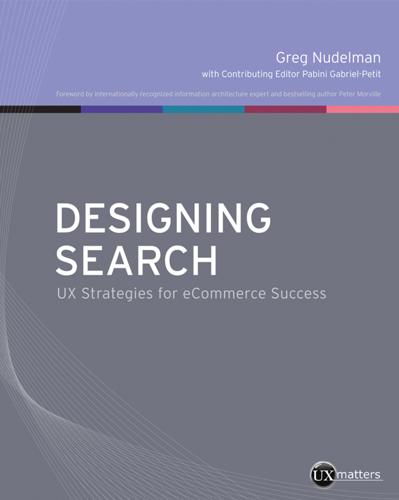
Designing Search: UX Strategies for Ecommerce Success
by
Greg Nudelman
and
Pabini Gabriel-Petit
Published 8 May 2011
She has a long-standing interest in the anthropology of work under global capitalism and cultivates a passion for the anthropology of waste during her off-hours. For more information, see www.interfacility.com. Christian Rohrer is a veteran of Web user experience design and research, having participated directly in the development of some of the world’s most popular Web destinations, including Yahoo!, eBay, and Realtor.com. In his most recent role as Senior Director of User Experience Design at Move, Inc., he led a talented team of designers and researchers in developing top real estate Web sites and applications., including the #1 consumer real estate Web site and the top-rated real estate iPhone app, both under the Realtor.com brand.
…
To my parents, who taught me the value of human-centered design; to Shannon, who supported my endless hours of writing and put up with my occasional absent-mindedness; to Katie and Juliette, for giving me endless joy and teaching me not to take myself too seriously. —Greg Nudelman About the Author Greg Nudelman is the founder of DesignCaffeine, Inc., a user experience design business consultancy specializing in search, social networking, business dashboards and process redesign for the mobile and Web platforms. Widely recognized as an experience design expert, Greg has published over 30 articles and speaks regularly to audiences around the world about how to design intuitive and elegant systems that improve the quality of people’s lives while creating abundant ROI.
…
He advises such clients as AT&T, Harvard, IBM, the Library of Congress, Microsoft, the National Cancer Institute, Vodafone, and the Weather Channel. His work on experience design and the future of search has been covered by Business Week, The Economist, Fortune, NPR, and The Wall Street Journal. Peter lives in Ann Arbor, Michigan with his wife, two daughters, and a dog named Knowsy. He blogs at findability.org. Ahmed Riaz is a user experience designer with a background in industrial design and design research, an expertise in visual thinking and a passion for making objects that dissolve into behavior. When not designing, he can be found searching for and eating at the best hole-in-the-wall restaurants and street food in the world. His past design experiences include time spent researching air craft interiors for Gulfstream Aerospace, honing his skills as a professional napkin sketcher for the visual thinking company XPLANE, and reinventing ecommerce for the internet pioneer eBay.
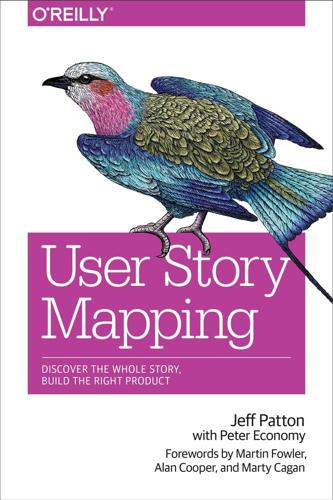
User Story Mapping: Discover the Whole Story, Build the Right Product
by
Jeff Patton
and
Peter Economy
Published 14 Apr 2014
But before you get too far, I want to show you my favorite trick for teaching others how to map. I promise if you try it, you’ll map like an expert from that moment on. Let’s pick up there in Chapter 5. * * * [7] I got the idea for this simple visualization from John Armitage’s 2004 paper “Are Agile Methods Good for Design?” John describes approaching user experience design this way. I’m suggesting we carry the metaphor into the way we build as well. Chapter 5. You Already Know How If you think that creating a story map is complicated, or mystical, or in any way hard to do, let me assure you right now that it’s not. In fact, you’re already wired to understand all the basic concepts used to create a map.
…
It’s Not All on the Card Yes, the big idea was that short story titles on cards would help us plan and facilitate lots of conversations between the people who could build software and the people who understood the problems that needed to be solved with it. But, sadly, it takes more than a couple of people to get a finished piece of software out the door. On a typical team you’ll find project managers, product managers, business analysts, testers, user experience designers, technical writers, and some other roles I’m probably forgetting. They’re all looking at the same cards, but the conversations they have are going to be different because they’ve all got different concerns to look after. Different People, Different Conversations If I’m a product manager or product owner, and I’m responsible for the success of this product, then I have to know a little more about my target market.
…
The area around the triad was filled with desks and computers where the rest of the team sat. I hear the term triad used when there are two people, four people, or even more on the discovery team, since it’s the three concerns—valuable, usable, and feasible—we’re talking about, not three bodies. Support product owners with a core team that includes user experience, design expertise, and technical expertise. A Discovery Team Needs Lots of Others to Succeed An effective discovery coordinates collaboration with not only the development team, but also business stakeholders, subject matter experts, customers, and end users. It’s tough work that requires top-notch communication and facilitation skills, in addition to the specific expertise each team member brings in.
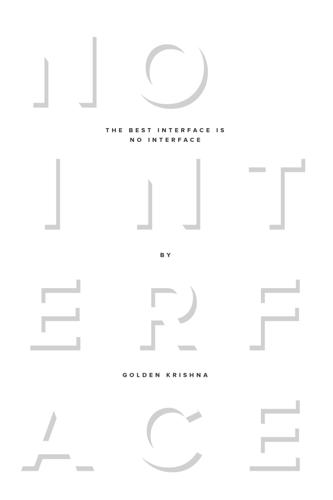
The Best Interface Is No Interface: The Simple Path to Brilliant Technology (Voices That Matter)
by
Golden Krishna
Published 10 Feb 2015
UX/UI Designer Nook, Palo Alto, CA eCommerce UX/UI Designer Beats by Dre, Los Angeles, CA Lead UX/UI Mobile Designer Logitech, Newark, CA UI/UX Designer Philips Global, Foster City, CA UI/UX Developer AutoTrader.com, Overland Park, KS UX/UI Developer JPMorgan Chase, New York, NY UX/UI Designer CBS Interactive, New York, NY UX/UI Designer Job American Express, New York, NY Sr. UX/UI Designer NBC Universal, Universal City, CA Senior Product (UX/UI) Designer Ancestry.com, San Francisco, CA User Experience Designer (UX/UI) ADP, San Dimas, CA UX/UI Designer NewEgg, Industry, CA Senior Product / UX Designer Outbrain Inc., New York, NY UI/UX Designer Zillow, Irvine, CA UX/UI Information Architect Caterpillar, Mossville, IL UI/UX Designer Staples, San Mateo, CA Lead UX/UI Designer Glassdoor, San Francisco, CA I know.
…
Now publicly traded, many of these companies are following a simple way to fulfill their legal obligation to shareholders and avoid the death of similarly structured business plans. Companies like the departed DrKoop.com (ad-sponsored medical help) or the extinct theGlobe.com (ad-sponsored web communities) get us addicted to their interfaces. They shift away from the functional ideals of user experience design that made their services initially popular, and become more like sitcom television: get people to go brain-dead staring at a screen for as long and as often as possible. “I have come to believe that advertising is the original sin of the Web.” Ethan Zuckerman, one of the original creators of the pop-up ad, once said that in a public apology printed in the Atlantic.
…
Why has the fragility and water vulnerability of smartphones become commonplace and accepted? We know glass and metal don’t do well in our cement cities. We know we sweat. Drop our phones. That it rains. Eighty-seven percent of all iPhone users have a case. Sixty-six percent of all Android users do.26 To me, those case usage rates are a sign of failure in user experience design. A failure to embrace typical processes. As smartphone manufacturers continue to spend millions in research to make phones thinner and thinner and lighter and lighter, and attempt to further and further reduce the absolutely-not-cumbersome edges around the screen in order to give gadget blogs something to drool over, most people just throw an ugly rubber case on them and don’t even notice.
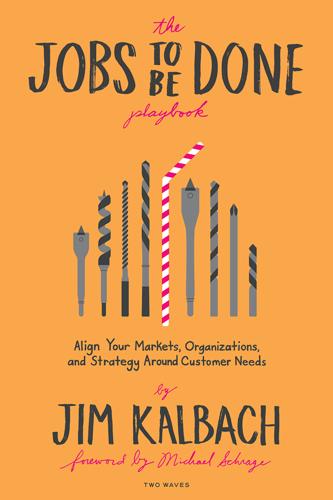
The Jobs to Be Done Playbook: Align Your Markets, Organization, and Strategy Around Customer Needs
by
Jim Kalbach
Published 6 Apr 2020
Ideally, this organization comes from patterns identified in the job to be done. Matching the model of the system to the model of the job ensures better comprehension, better usability, and ultimately better product-market fit. Architecting a solution recalls Jesse James Garret’s infamous model for user experience design, which has five layers (see Figure 5.2).7 In the middle is “Structure,” or how the pieces of a product or service fit together conceptually. Prior to that, however, the product provider needs to determine the strategy and scope. After the structure is determined, the skeleton and surface of the interface are created.
…
Thanks to JTBD, our team was able to focus on solving the biggest opportunities of the customer experience on carmax.com, thus making a meaningful impact to the product. Jake Mitchell is a Principal Product Designer at CarMax, where he strives to reinvent the way customers find and fall in love with their next car. In addition to user experience design and research, Jake is proficient in web development and data science. This case study is a summary of his presentation “Using Jobs to Be Done at CarMax to Guide Product Innovation,” given at UX STRAT 2017 in Boulder, Colorado. Recap JTBD not only helps you understand the customer’s problem, but it also guides solution development.
…
Todd, 122, 127, 263 Lowdermilk, Travis, 149–150, 153, 266 M main job, 21–22, 32 defining, 37–42 mapping, 72–78, 258 main job statement, formulation of, 41–42 manager, as function in job ecosystem, 19–21 Mapping Experiences (Kalbach), xv, 218 market opportunities, expanding, 218–221, 274 matrix organization, 209–210 Maurya, Ash, 153, 266 McCarthy, Bruce, 122, 127, 263 mental model, 145–146, 189–190 micro-jobs, as level of abstraction in JTBD, 33–34 Microsoft, 196 milkshake marketing, 6–7, 104 minimum viable product (MVP), 151 Mitchell, Jake, 154–158 model for user experience design, 138 Moesta, Bob, 5, 7, 14, 46, 59, 61, 64, 71, 256, 257 MURAL, 174, 246–250 Murphy, Lincoln, 177 N needs aligning product strategy with customer needs, 113–116 as element of JTBD, 18, 28–30, 32 and technology, 94–95 needs statements, 29–30 aligning teams to jobs stories, 134–136 comparing competing solutions, 104–105 for online event organizing, 190–191 in product architecture, 148 Nielsen Norman Group, 135 Nike, 77 Nitterhouse, Denise, 62, 64 Norman, Don, 94 O object of the need, 29 objections to JTBD, 242–243 Olsen, Dan, 89, 93, 234, 259 onboarding customers.
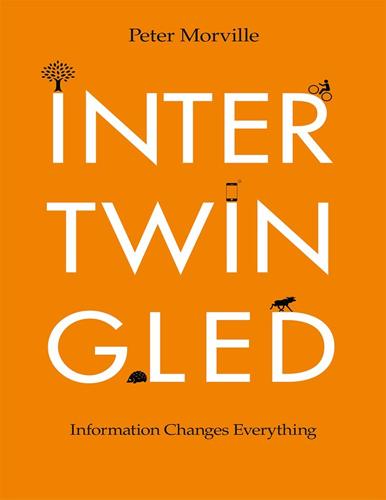
Intertwingled: Information Changes Everything
by
Peter Morville
Published 14 May 2014
In making frameworks for collaboration, we must think about goals, metrics, roles, and relationships, because how we organize ourselves changes everything. The categories we choose and the words we use to describe the project, program, process, product, service, or ecosystem will alter the path and destination invisibly and irrevocably. A digital strategy team is blind to physical touchpoints. A user experience designer ignores content creators. A search engine optimization project ruins the information architecture. Words are the interface, not just on the Web, but in our minds. As a wise woman wrote “Language as an articulation of reality is more primordial than strategy, structure, or culture.”xxxi To avoid blind spots, we must see (and speak) differently, using averted vision to shift focus from center to beyond the periphery.
…
It amps up permeability and softens the boundary between us and them. In 2012, Dan Klyn borrowed this theory to re-frame the relationship between user experience and information architecture. In his account, using centered sets is like herding cats. The center is a pail of milk that draws cats. For user experience designers “the pail is design, and it’s situated in a place where users and their experiences are the center of gravity.” xlii And what about information architects? What’s their center? Well, those crazy cats are centered on meaning. Or is it placemaking or planning or cognition? To be sure, we can (and should) argue about the centers, but that’s not the most pivotal point.
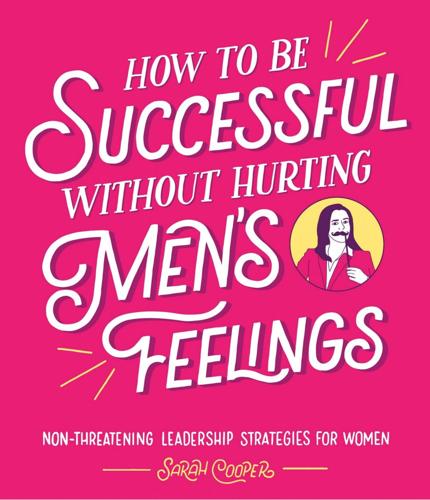
How to Be Successful Without Hurting Men’s Feelings: Non-Threatening Leadership Strategies for Women
by
Sarah Cooper
Published 1 Nov 2018
For information, please e-mail the Andrews McMeel Publishing Special Sales Department: specialsales@amuniversal.com. Sarah Cooper is a writer, comedian, speaker, and author of the bestselling book 100 Tricks to Appear Smart in Meetings. She built her comedy career in between working as a user experience designer for companies like Yahoo! and Google, where she was fed free lunches and lots of material. She is the creator of the satirical blog TheCooperReview.com, which is viewed by millions around the world and has been featured in the Washington Post, Forbes, Fast Company, and countless other publications.
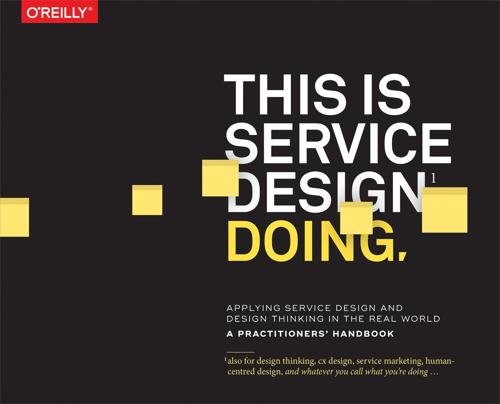
This Is Service Design Doing: Applying Service Design Thinking in the Real World: A Practitioners' Handbook
by
Marc Stickdorn
,
Markus Edgar Hormess
,
Adam Lawrence
and
Jakob Schneider
Published 12 Jan 2018
This assessment by project managers is mandatory whatever the goal of the project (services or products, whether physical or digital). If the result of the check reveals relevance to user experience, design experts are engaged in order to identify activities that can be executed as an integrated UX or service design project. The design team has first talks with the specific division in order to understand the scope of the “technical” project and identify user-centered design activities that could be executed as “integrated” UX or service design project. Such activities are categorized as “user experience design” or “service design” projects. In order to prevent a clash of working cultures, mindset, or terminology, the design team is free to decide on a different label and just refer to the scope as “improvement of the experience,” no matter if the project is concerned with the use of new products and services or the establishment of a customer relationship.
…
Holistic: Services should sustainably address the needs of all stakeholders through the entire service and across the business. Service design is a practical approach to the creation and improvement of the offerings made by organizations. It has much in common with several other approaches like design thinking, experience design, and user experience design, has its origins in the design studio, and harmonizes well with service-dominant logic. 20 It is a human-centered, collaborative, interdisciplinary, iterative approach which uses research, prototyping, and a set of easily understood activities and visualization tools to create and orchestrate experiences that meet the needs of the business, the user, and other stakeholders.
…
We addressed two challenges in an iterative way, utilizing prototypes as a tool to co-create, to communicate, and to iterate: information system interfaces on the shop floor and material delivery. In building the team, we relied on experienced service designers from Airbus to manage the overall design process, project and stakeholder management. For the information system side of the project, we chose an external partner with specialists in industrial design, design thinking, and user experience design. It was also important for us to bring in perspectives from a non-aerospace domain, bringing in diverse skillsets and design expertise. Prototype in the final assembly line. Sketch of the future system. Information system interface feedback session. Scale models as tools in the process.
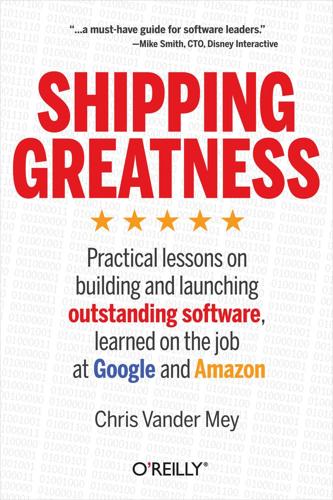
Shipping Greatness
by
Chris Vander Mey
Published 23 Aug 2012
But if you’re a great golfer, you’ll hit those sweet shots that put you onto the soft green and when you look around, surrounded by sweating, confused duffers, you’ll know what it’s about. It’s glorious. This book covers two major things that will help you be great at shipping. Part One describes a process for shipping that many of the best teams from Amazon and Google use. I work from the beginning—a customer problem—through the details of user experience design, project management, and testing to the end result of launching. Part Two contains techniques, best practices, and skills that a team lead who’s been asked to ship software needs. While Part One is arranged in the order in which you’ll follow the process, you can read Part Two in whatever order you like, and refer to it when you have a particular challenge.
…
How to Build a Great User Experience THE USER EXPERIENCE IS not just what your product looks like, it’s how it works, too. Shipping greatness means shipping a great user experience. If nobody can use your product, or people hate the way it looks, or if they can’t figure out how to log in, greatness is out of your reach. So even though you’ve hired or borrowed a talented user experience designer, you can’t pass the buck down the line and expect to keep shipping. You need to plan on sharing ownership of the user experience of your product. It’s not your job to solve all user experience problems; it is your job to ensure that your product provides the best user experience possible, and that means getting the best out of your design team.
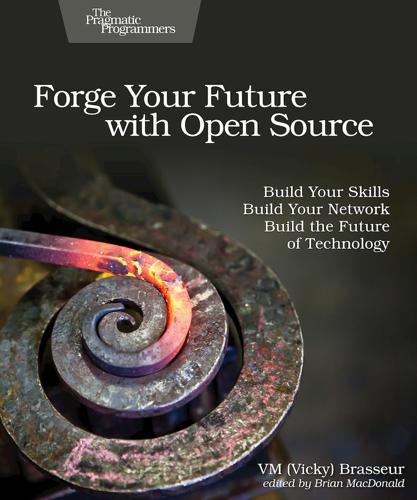
Forge Your Future with Open Source
by
VM (Vicky) Brasseur
Nothing could be further from the truth! Free and open source software is…well…software, so naturally rather a lot of code is involved. But anyone who’s ever used software (all of you) realize that there’s more to a successful software project than simply the code behind it. There’s user interface and user experience design, and documentation as well. That documentation and user interface may require translation to other languages. All of this—code, user interface, documentation—requires testing and review for potential bugs and for stylistic consistency. Testing—either by the team or by end users—leads to bug reports.
…
This important documentation can not only help future contributors, but it can also be your first contribution to the project! Craft Your Contribution Once you have some idea whether your contribution is needed for the project, you’re ready to create it. The specifics of how you create it naturally will vary depending on the type of contribution: documentation, user experience, design, code, or other types. Each contribution type obviously will have its own creation process. Whatever that process is, before you start, do double-check whether the project has already defined some guidelines for it. As covered in Chapter 3, Prepare to Contribute, many projects provide styleguides and contributor instructions.
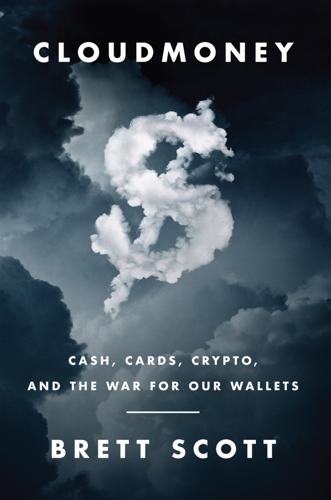
Cloudmoney: Cash, Cards, Crypto, and the War for Our Wallets
by
Brett Scott
Published 4 Jul 2022
The team members he was addressing were young and had a background in art and design. Their job was to help with the bank’s ‘digital transformation’ – the process of shutting down branches and pushing people onto apps. Banks might have previously hired interior designers to deck out branches, but the job of drawing people into apps requires user experience design (the digital equivalent of aisle layout). The team’s big boss is the Chief Design Officer, a former head at Google brought in precisely because of his expertise in digital self-service systems. The mission is simple: move people away from costly service and get them to give themselves cheap self-service.
…
Thus, while some people may like apps and others not, the banks are going to push you onto them regardless, because they have a commercial imperative to do so. And in the same way as they have to change attitudes towards cash, so they have to find ways to wean non-compliant people off physical service. I have worked with user experience design teams in London who are given explicit briefs by banks to help them solve the ‘problem’ of older people who still expect this service. Financial insiders use all manner of euphemisms to talk about these non-compliant people: a statement like ‘There are obstacles to digital transformation’ translates into ‘We are struggling to push people onto our app.’
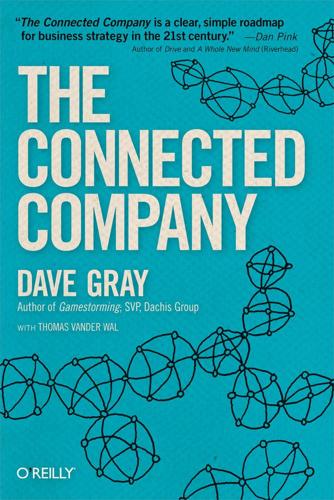
The Connected Company
by
Dave Gray
and
Thomas Vander Wal
Published 2 Dec 2014
Connecting an Internal Group at Marriott Livia Labate is Senior Director of User Experience Design for Marriott International. She is responsible for the user experience across all of the company’s websites and mobile applications. When she came on board, Labate’s group was made up of about 40 people who were divided into groups based on their function. They were pulled together to collaborate on a project-by-project basis, and when projects were done, the individuals involved dispersed back to their separate groups. She says, “When I started with the team, I found that they were feeling really disempowered and morale was really low…The user experience design practice was supposed to be composed of these chefs who had real deep knowledge and expertise and could create these amazing cuisines, but we were really line cooks.
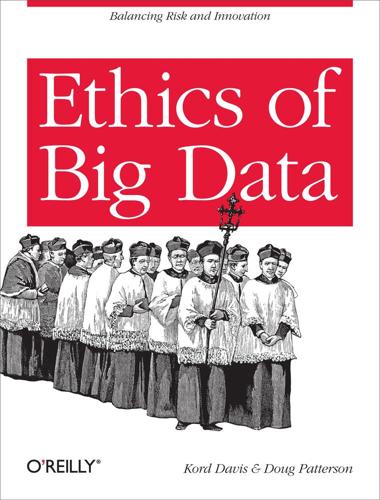
Ethics of Big Data: Balancing Risk and Innovation
by
Kord Davis
and
Doug Patterson
Published 30 Dec 2011
They contain a description of key roles, any ethical decision points, alignment actions, and anticipated outcomes. They help to identify shared values and create a vocabulary for explicit dialog, thereby reducing risk from misalignment and encouraging collaboration and innovation across working teams. The use of audience (or user) personas is a common methodology in advertising, user experience design, and product and market research. In traditional practice, attributes are associated with a hypothetical individual for the purpose of segmenting audiences into predictable behaviors and needs. Value Personas are an evolution of traditional user personas that express how a specific value shows up and influences action within an organization.
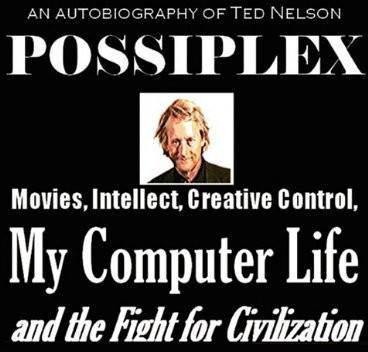
Possiplex
by
Ted Nelson
Published 2 Jan 2010
They are a branch of moviemaking, because they are all about what the user thinks and feels, and inviting the user to think certain ways (understanding menus, for instance) and feel a certain way (excited and participatory, rather than oppressed). Only lately (ca. 2009) has the true issue been made manifest in the computer field, with a new slogan expressing my views of the last fifty years: User experience design. • A Philosophy Machine! The computer was obviously a philosophy machine. What is philosophy? The search for the best abstractions. What was the fundamental problem of the computer? The search for the best abstractions. Everybody in the field was taking initiatives in different directions, looking for the best fundamental units, the best fundamental methods.
…
My Computer and Electronic Ideas, 1960-1 I am not saying I am the only person who thought of these things, only that I thought of them independently. (This may be only a partial list.) • principles of interactive software; my own theory of interaction (first called splandremics, later called fantics and virtuality (as well as construct logic and substruction); all these closely related to what is now called “user experience design”) • a variety of screen tricks-•• selection method based on light-pen sweeps (“Zorro-language”) •• scrolling (vertically, horizontally, diagonally) •• zooming •• menus (but not cascading menus; and I did not come up with the term “menu,” which I found quite amusing the first time I heard it) • a paper for Professor Couch, in that first computer course, proposing to represent all information as dyadic relations with types.
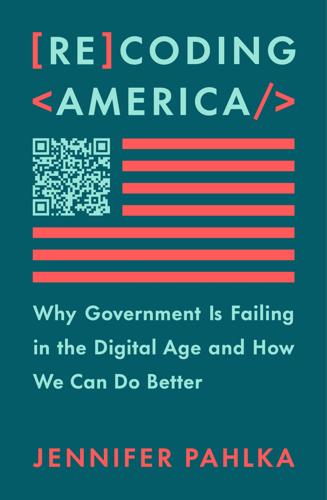
Recoding America: Why Government Is Failing in the Digital Age and How We Can Do Better
by
Jennifer Pahlka
Published 12 Jun 2023
The predecessor to COBOL, the computer language that still powers mainframes at California’s EDD and many other agencies, was developed by navy rear admiral Grace Hopper (who is also the source of the ever-useful phrase “it is easier to ask forgiveness than to get permission”). By the mid-1960s, the federal government purchased over 62 percent of the output of the entire US computer industry.1 The field of user experience design, the discipline most responsible for the ease of use (and occasional delight) provided by modern consumer software and web apps, also has its roots in the military. During World War II, the need for air dominance spurred the design of new aircraft that could outmaneuver the enemy’s forces, but as these planes began to be deployed an alarming number of them crashed due to pilot error, often during training.
…
“But it needs to make sense to a person.” Making sense to a person is something that often gets lost along the way. One of Natalie’s peers at the USDS, for example, was helping the Small Business Administration with a form that business owners had to fill out to qualify as a minority-owned business. This user experience designer watched proprietors stop and squint in confusion at questions such as “Does someone receive greater compensation than the highest officer or individual upon whom eligibility is based?” In one session, one of the business owners looked up and said, “Why don’t you just ask if I’m the highest-paid employee at my firm?”

Surviving AI: The Promise and Peril of Artificial Intelligence
by
Calum Chace
Published 28 Jul 2015
In the past, people whose jobs were automated turned their hands to more value-adding activity, and the net result was higher overall productivity. The children of people who did back-breaking farm work for subsistence wages moved into the cities where they earned a little more doing mundane jobs in offices and factories. Their great-grandchildren now work as social media marketers and user experience designers – jobs which their great-grandparents could not have imagined. Perhaps our children will also be doing jobs that we could not anticipate today. (Emotion coaches? Dream wranglers?) Probably not. Martin Ford, who has written extensively on technological unemployment, argues that in 2014, 90% of the USA’s 150m workers were doing jobs which already existed 100 years earlier. (28) Even if we can keep inventing new types of employment, will the rate of churn be too fast for us to keep up?

Machine, Platform, Crowd: Harnessing Our Digital Future
by
Andrew McAfee
and
Erik Brynjolfsson
Published 26 Jun 2017
At the time, the messaging service had 600 million monthly active users but just 70 employees and was handling 50% more messages every day than the entire global SMS network. To see the importance of network effects, imagine an app, call it “WhatsWrong,” that was identical in all its functionality and user experience design to WhatsApp, except it had zero users. How much do you think Facebook, or anyone else, would pay for WhatsWrong? WhatsApp shows that network effects arise in part because of the choices made by platform creators. If the app’s developers had decided to make their creation easily interoperable with established SMS networks, users of these networks would have switched over to WhatsApp for cost reasons only, if at all.
…
The best routes for Uber drivers to take as they pick up and drop off overlapping fares, for example, is a variant of the classic “traveling salesman” problem in operations research, where the salesman has to figure out the shortest route that will take him through all the cities he’s responsible for once and only once. The huge amount of data that O2O businesses generate makes them fertile territory for machine learning, the information-heavy approaches to artificial intelligence that are now dominant, as we discussed in Chapter 3. User interface and user experience design, too, are experiencing a heyday, in large part because of the popularity of platforms. It’s extremely hard to make websites flexible, powerful, and intuitive all at the same time, and even harder to do the same for apps (because they have to run on phones’ small screens). All the platform builders we’ve talked to have stressed how hard they’ve worked on their user interfaces, and how much they continually iterate and experiment to refine them over time.
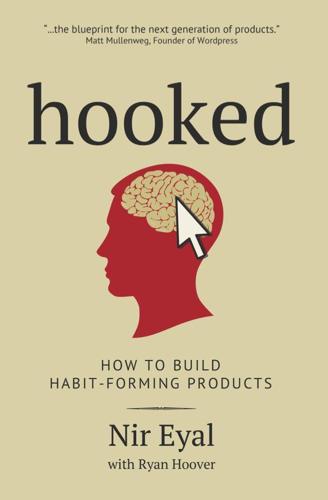
Hooked: How to Build Habit-Forming Products
by
Nir Eyal
Published 26 Dec 2013
Businesses skilled in behavior design guarded their secrets, and although I uncovered books, white papers, and blog posts tangentially related to the topic, there was no how-to manual for building habit-forming products. I began documenting my observations of hundreds of companies to uncover patterns in user-experience designs and functionality. Although every business had its unique flavor, I sought to identify the commonalities behind the winners and understand what was missing among the losers. I looked for insights from academia, drawing upon consumer psychology, human-computer interaction, and behavioral economics research.
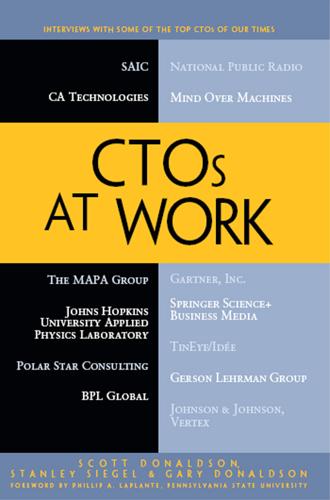
CTOs at Work
by
Scott Donaldson
,
Stanley Siegel
and
Gary Donaldson
Published 13 Jan 2012
Donaldson: It's a strategic, collaborative partnership with your customers. Loveland: I like to think so. G. Donaldson: What kinds of services do you provide? Loveland: We offer services basically in three different areas. We provide high-level consulting services—strategy, analysis, innovation—as well as a strong specialty in user experience design and we match that with just solid application delivery: enterprise systems, standalone apps, legacy modernization, and data analytics. G. Donaldson: Do you consider yourself a small or midsized firm? Loveland: I consider us small. But I'm going to talk to a six-person firm tomorrow, and they're pretty impressed with what we've achieved, so it's all relative.
…
Then let's say you get the strategy figured out; you make a pretty good guess at where you need to go and you start heading down that path and build an integrated system of some kind. If it ends up being a system that nobody really wants to use or it's hard to use, you're probably going to fail. You really need to pay attention to user-experience design, the second circle. The third circle is technology. If you know where you're going and you got that right, and the people like using the system, and holy cow, you're successful, but you built it with toothpicks and the thing falls over or collapses on itself, or you can't enhance it or whatever—you fail.
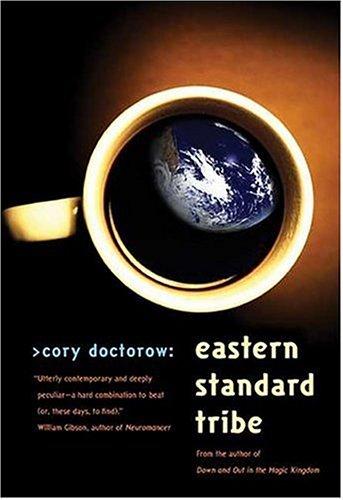
Eastern standard tribe
by
Cory Doctorow
Published 17 Feb 2004
"Look, you don't want to talk about him, we won't talk about him," he managed. "No, let's talk about my fucking ex, by all means." She adopted a singsong tone and started ticking off points on her fingers. "His name is Toby, he's half-Japanese, half-white. He's about your height. Your dick is bigger, but he's better in bed. He's a user-experience designer at Lucas-SGI, in Studio City. He never fucking shuts up about what's wrong with this or that. We dated for two years, lived together for one year, and broke up just before you and I met. I broke it off with him: He was making me goddamned crazy and he wanted me to come back from London and live with him.
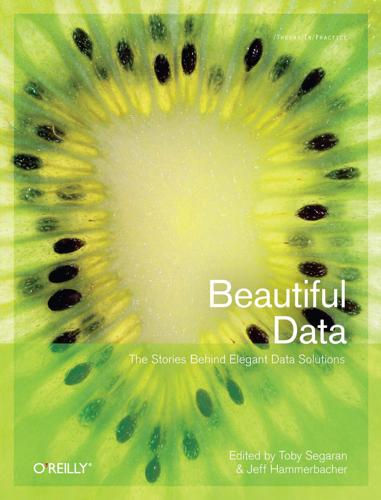
Beautiful Data: The Stories Behind Elegant Data Solutions
by
Toby Segaran
and
Jeff Hammerbacher
Published 1 Jul 2009
Generally, UX design techniques 17 Download at Boykma.Com are applied to desktop and web-distributed software, although proponents may use the term more broadly to describe the design of any complex experience—such as that of a museum exhibit or retail store visit. The Benefits of Applying UX Best Practices to Data Collection When it comes to data collection, user experience design is more important than ever. Data—that most valuable digital resource—comes from people and their actions, so designers and developers need to be constantly thinking about those people, and not just about the data they want to collect. The key method for collecting data from people online is, of course, through the use of the dreaded form.
…
Census data website, 336 U.S. census data, project using (see sense.us website) U.S. Department of Agriculture website, 336 unshredding of corpus data, 240 uplink, in space missions, 38 urban data (see Oakland Crimespotting project) Urban Sensing group at UCLA, 2 Urban Wallace Associates, survey for (see customer survey project) USC WebGIS service, 305 UX (user experience) design, 17 website resources ChemSpider, 266 Chicago Crime project, 168 FaceStat.com, 279 Genomes Project, 253 Integrated Public Use Microdata Series (IPUMS) databases, 186 International Cancer Genome Consortium, 253 Linguistic Data Consortium, 219 PEIR system, 15 Phoenix Mars Lander system, 54 public data sources, list of, 336 sense.us website, 184 for this book, xiv YFD system, 15 websites, information behind (see Deep Web) Wickham, Hadley (author), 303–321 Williams, Antony (author), 259–277 Willighagen, Egon (author), 259–277 Wood, Jo (author), 85–101 Wood, Matt (author), 243–258 word segmentation analysis of corpus data, 221–227 V X Valeski, Jud (author), 119–131 Velodyne Lidar scanner, 151, 155–158 vertical search, 134, 135 views, materialized, 66 visual data (see Geograph archive; Phoenix Mars Lander system) vocabulary, definition of, 220 voting choices (see political data) XML, 121 XMPP, 120 U W WAN scale events, 127 Web Hooks, 127 WebGIS service, 305 364 Y Yahoo!

Agile Project Management With Kanban
by
Eric Brechner
Published 25 Feb 2015
In that case, every note card is a bug or ticket, and the steps are the ones used to resolve those items. For more details, see Chapter 8, “Sustained engineering.” * * * Problem: Item needs design work Sometimes an item in the backlog is so complex that an analyst needs extra time to specify it and break it down. Often this involves some user experience design, architectural design, and perhaps experimental design. (My favorite approach to design work is called Scenario-Focused Engineering, which I describe in more detail in Chapter 9.) The design work is a task unto itself, so you make the design work a separate work item on the signboard. The Specify step for design work is breaking down the work into smaller tasks.
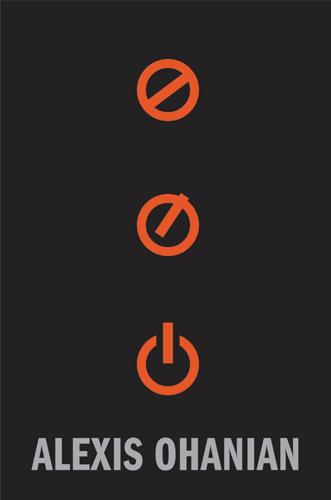
Without Their Permission: How the 21st Century Will Be Made, Not Managed
by
Alexis Ohanian
Published 30 Sep 2013
If he’d taken a job at an established software company, it’d more than likely have been at the ground-floor level. Instead he was a CTO, albeit at a company of two. But without a gatekeeper, he was (and we were) able to learn as we went. Steve’s senior thesis was his first substantial chunk of web code. He didn’t know anything about databases, user experience design, or scaling, but he’d read enough online that he figured he could just learn it along the way. “Everything I had learned about programming, I’d already learned online. That’s the culture of development right now. More than any other piece of knowledge, how to program is on the Internet.”9 This makes sense: the Internet was built by programmers, so it’s no surprise that programmers have made it such a fertile place to learn the trade.
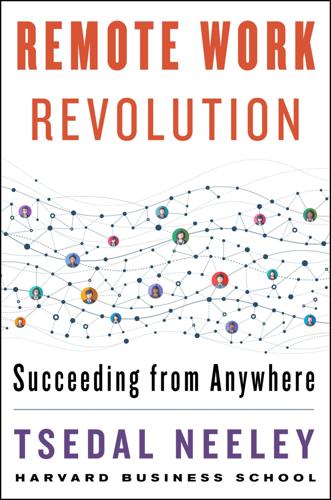
Remote Work Revolution: Succeeding From Anywhere
by
Tsedal Neeley
Published 14 Oct 2021
As team members moved around, they got to know one another and expanded their familiarity with other AppFolio employees. The result was a network of interconnected teams all working together at the Santa Barbara headquarters—a free-flowing, open-concept space that encouraged cross-pollination of ideas. Clayton Taylor, a user experience designer at AppFolio, saw this as an essential element of the company’s success with the agile approach: “Being co-located gives everyone at least a baseline knowledge of all the projects going on. There’s a natural awareness by proximity.” For example, if Tyler’s team was looking for outside advice, he could walk a few feet and ask any number of colleagues he had gotten to know personally on previous agile teams.
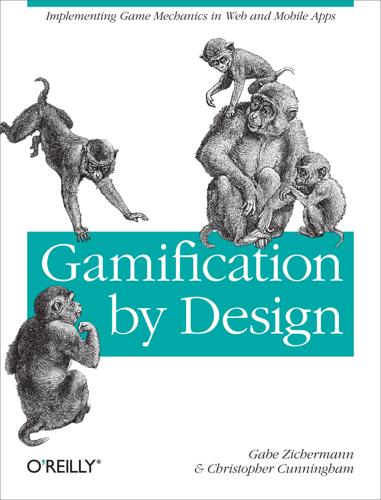
Gamification by Design: Implementing Game Mechanics in Web and Mobile Apps
by
Gabe Zichermann
and
Christopher Cunningham
Published 14 Aug 2011
Gamification Case Studies In the previous chapters, we focused on the theory and mechanics behind gamification. We looked at the psychological motivations that drive player behavior, and we analyzed the different types of players and how to design for their engagement. We reviewed key game mechanics and dynamics, and we examined how they can be used to engage players more deeply. Game and user experience designers have been implementing these techniques for decades to create addictive games and engaging player experiences. However, gamification as a complete concept—actively relying on game mechanics to engage players and solve problems—is still in its infancy. It can be challenging to think about how they apply to disparate real-world websites and applications.
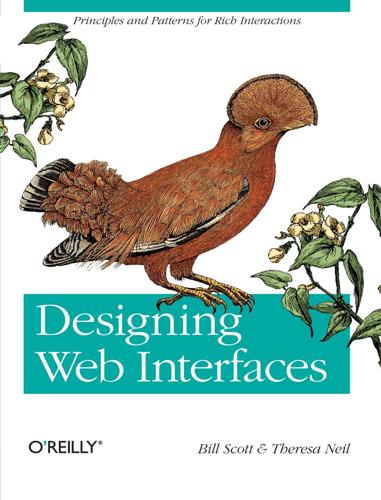
Designing Web Interfaces: Principles and Patterns for Rich Interactions
by
Bill Scott
and
Theresa Neil
Published 15 Dec 2008
Why We Wrote This Book While I got the chance to live through the first interface revolution for the desktop (even writing one of the first games for the Macintosh[2]), my coauthor Theresa Neil lived through the second revolution on the Web. A few years ago our paths crossed at Sabre (parent company of Travelocity). Together we founded a user experience design team and worked to improve dozens of products, performing heuristic evaluations and participating in full web application redesigns. From that work, we distilled a number of user interface design patterns as well as anti-patterns (common mistakes to avoid). From there I went to Yahoo! and got to play an active role in defining the Ajax interface revolution on the Web.
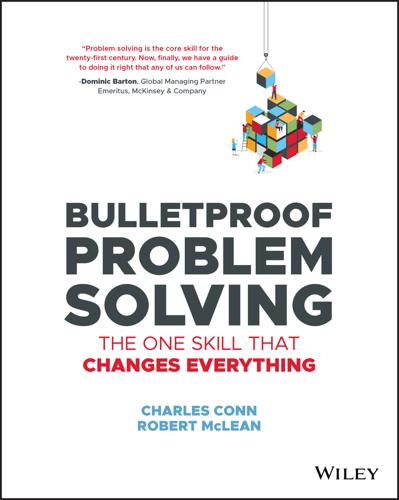
Bulletproof Problem Solving
by
Charles Conn
and
Robert McLean
Published 6 Mar 2019
In the next chapter we show the link between good problem statements and good hypotheses to test. You won't be surprised to learn that sharp problem statements lead to better and more testable hypotheses. Design Thinking and Seven Steps One of the most common problem statements we come across relates to the user experience. Design thinking has developed as a powerful tool for problem solvers tackling consumer needs and the user experience, often in product or service design situations, but also outside those areas where creativity in problem solving is important to good outcomes. We are often asked where design thinking sits in relation to our seven‐steps analytic problem solving process.
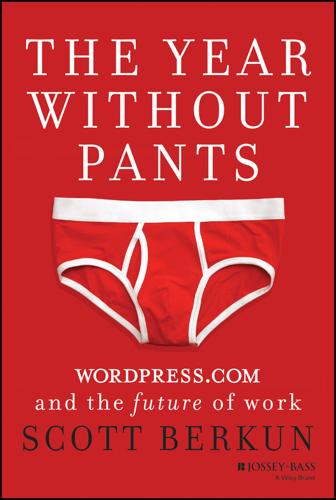
The Year Without Pants: Wordpress.com and the Future of Work
by
Scott Berkun
Published 9 Sep 2013
Since the company started in 2005, it had launched hundreds of features and improvements this way. Many people had never worked at a major software company before, and this was the most elaborate development process they'd seen.1 Do you see anything missing? If you've made a product in your life, I'm sure you did. What about marketing? Where is user experience design? What about quality assurance? What about collisions between different projects? There are dozens of things this process doesn't account for. Any mature company would look at this process and laugh, and with some good reason. But what they'd miss is the power of simplicity. A simple process affords three things: 1.

The Economic Singularity: Artificial Intelligence and the Death of Capitalism
by
Calum Chace
Published 17 Jul 2016
New jobs If machines are going to take a great many, perhaps most, of our existing jobs, can we create a host of new ones – perhaps whole new industries – to replace them? Those who think we can point out that many of the jobs we do today did not exist a hundred years ago. Our grandparents would not have understood what we mean by website builder, social media marketer, user experience designer, chief brand evangelist, and so on. Surely, the argument goes, all these new technologies we have been talking about will throw up many new types of jobs that we cannot imagine today. As the person probably most responsible for Google's self-driving cars, Sebastian Thrun is a man worth listening to on the subject.
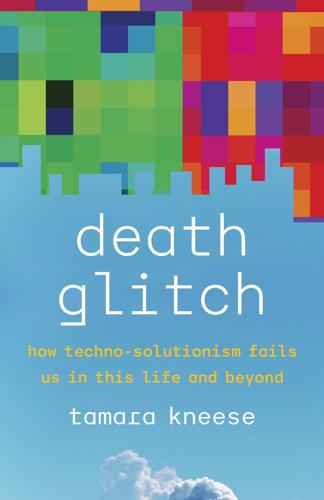
Death Glitch: How Techno-Solutionism Fails Us in This Life and Beyond
by
Tamara Kneese
Published 14 Aug 2023
During the pandemic, tech billionaires, who account for eight of the ten richest people on planet earth, have doubled their wealth.1 Remote work, learning, and even highly mediated final good-byes and mourning rituals through FaceTime and Zoom have made people more dependent on platforms than ever before, while exacerbating inequalities. Platforms, too, have shifted to accommodate a period of mass death. GoFundMe updated its UX (user experience) design to make mourning users feel more at ease while they are raising money for funerals and memorials. The crowdfunding platform borrowed features from the life insurance startup industry. In contrast, on its main memorialization webpage, Facebook told its users to expect delays in addressing memorialization requests because of pandemic-related labor shortages.
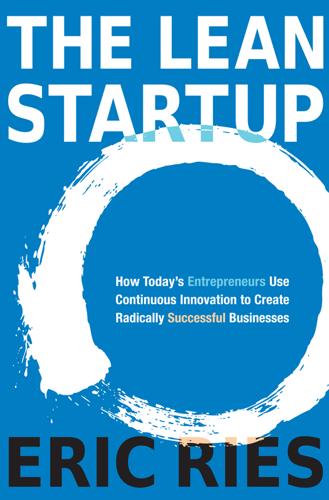
The Lean Startup: How Today’s Entrepreneurs Use Continuous Innovation to Create Radically Successful Businesses
by
Eric Ries
Published 13 Sep 2011
Special thanks to Rob Mee, Ian McFarland, and—most important—Parker Thompson, who worked tirelessly to build, experiment, and learn with me. Thanks also to IMVU cofounder Marcus Gosling, one of the most talented designers I know, who designed this book’s cover, after countless iterations. One of the premier web and user experience design firms, Digital Telepathy, designed and built the website for http://theleanstartup.com, using their unique Iterative Performance Design process. It’s awesome. Learn more at http://www.dtelepathy.com/ I was extremely fortunate to have the support of three legendary institutions at various points in my journey.
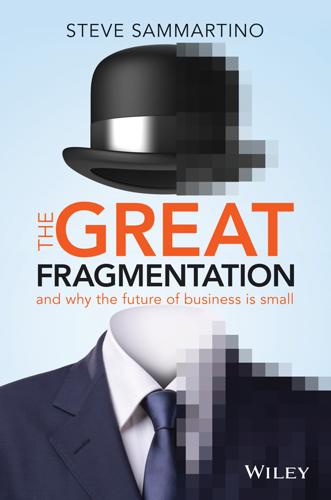
The Great Fragmentation: And Why the Future of All Business Is Small
by
Steve Sammartino
Published 25 Jun 2014
Keyboards, like all technology, will eventually supersede themselves, and that process has already commenced. While high-quality voice recognition software seems to be forever promised ‘next year’, the keyboard has in many places been usurped. Most smartphones and tablets, while they have a visual replicator for a keyboard, are infrequently used. The user experience design high ground seems to be centred around making a keyboard an unnecessary interface. If we take it to an even deeper level, this distinction of being at some kind of ‘connected terminal or device’ will evaporate as well. Everything in our world — from packaged goods, to the windows in our homes — is on the verge of being connected.

Exponential Organizations: Why New Organizations Are Ten Times Better, Faster, and Cheaper Than Yours (And What to Do About It)
by
Salim Ismail
and
Yuri van Geest
Published 17 Oct 2014
The following roles are critical if founding ExO teams are to deliver diverse backgrounds, independent thought and complementary skills: Visionary/Dreamer: The primary role in the company’s story. The founder with the strongest vision for the company comes up with the MTP and holds the organization to it. User Experience Design: Role focuses on users’ needs and ensures that every contact with users is as intuitive, simple and clear as possible. Programming/Engineering: Role responsible for bringing together the various technologies required to build the product or service. Finance/Business: The business function assesses the viability and profitability of the organization, is the cornerstone of interactions with investors and manages the all-important burn rate.

The Twittering Machine
by
Richard Seymour
Published 20 Aug 2019
In recent decades, however, the favoured form has moved from the table to the slot machine. And the slot machines, digital and complex, have come a long way from the days of the one-armed bandit. Now the gambler experiences no macho showdowns, just an interactive screen offering multiple permutations of odds and stakes, deploying user-experience design techniques similar to video-gaming to induce pleasure. The machines have a range of devices to give users the appearance of regular wins to keep them playing. These are often ‘losses disguised as wins’, insofar as the pay-off is less than the cost of playing. But the wins are not even the goal of playing.
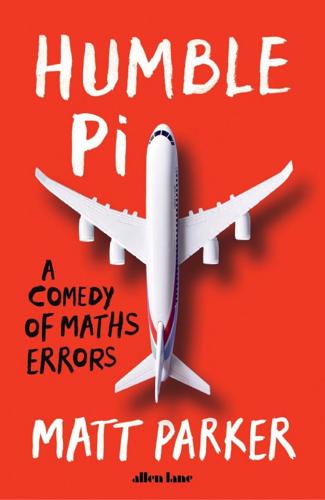
Humble Pi: A Comedy of Maths Errors
by
Matt Parker
Published 7 Mar 2019
Because the new-fangled technology was doing the sorting of the recording sheets, the report sheets used to record the data did not need to be arranged to make the later data-processing easy. Instead, they were arranged to minimize human error and even reduce how often people had to put different instruments down and pick them up. Tape measurements are all in one column and caliper measurements in another. It was an early case of reducing error by user-experience design. How average are you? Anthropometry of Air Force Flying Personnel (1950) How does your nipple height compare to this guy from 1950? Do you look more or less excited than he does to have it measured? A lot of effort was put into reducing all sources of error in the survey. Outliers were removed, with borderline cases dealt with on a ‘no harm, no foul’ basis: if it was uncertain if a particular value was an error or just an extreme value, they checked if removing it made any difference to the overall stats.
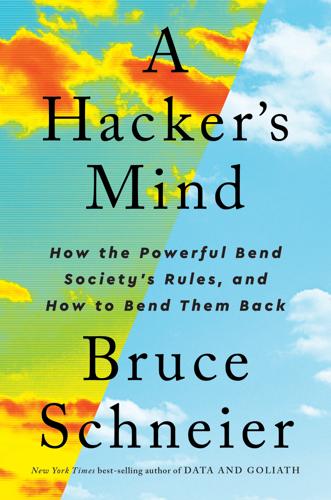
A Hacker's Mind: How the Powerful Bend Society's Rules, and How to Bend Them Back
by
Bruce Schneier
Published 7 Feb 2023
“Dark patterns” is a term given to subversive user-design tricks that co-opt common designs to nudge users towards certain ends. Normally, standardized design guides us through our interactions online; it’s a visual language that we trust. In habitual behaviors like driving, for example, green means go, and red means stop. Those same colors are similarly used as guides in user experience design all the time. They become a dark pattern when a series of green “continue” buttons is suddenly subverted to sell an in-app purchase, as in the mobile game “Two Dots.” Or when ads for other software place a green “click here to download” button as they interrupt a series of “continue” buttons in a sequence of webpages.
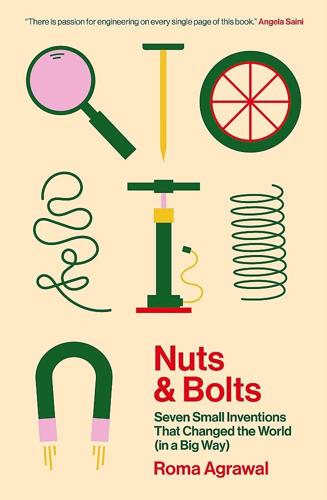
Nuts and Bolts: Seven Small Inventions That Changed the World (In a Big Way)
by
Roma Agrawal
Published 2 Mar 2023
I spoke to electronics engineer Shrouk El-Attar (she/they), who worked at Elvie. (I first came across her profile because of her Egyptian belly-dancing drag shows and activism in support of refugees, being one herself.) The core team developing the Elvie breast pump was composed of around ten people, ranging from researchers to user-experience designers and software and electronics engineers. The idea was to try and erase the picture of what breast pumps had looked like to date and start again from scratch – back to basics. It was the first time that the person using the pump was placed at the centre of the design process, and their needs addressed.
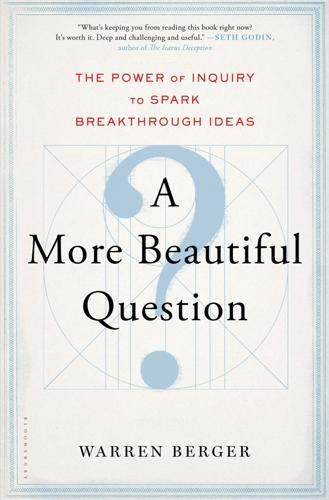
A More Beautiful Question: The Power of Inquiry to Spark Breakthrough Ideas
by
Warren Berger
Published 4 Mar 2014
, “I was skeptical at first—it sounds a bit Californian.” But before long, says Warren, IDEO was conducting companywide question-storming sessions with seven hundred people asking the question together. When Charles Warren then moved from IDEO to Google, the infectious HMW approach found a new host. Warren led the user-experience design team that took on the challenge of creating Google+. “We were asking How might we? questions every day,” he says. At Google, such questions can run the gamut from How might we predict whether a flu outbreak is going to happen, based on search queries? to How might we help more people feel more comfortable sharing more of their lives in social media?
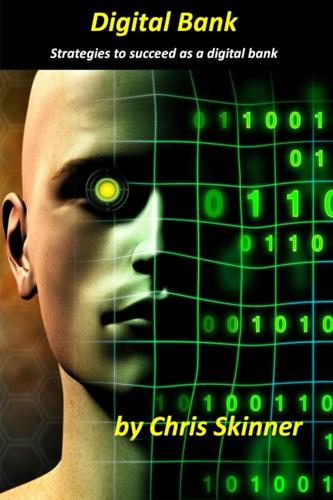
Digital Bank: Strategies for Launching or Becoming a Digital Bank
by
Chris Skinner
Published 27 Aug 2013
So, if I were opening a new bank, the first thing I would focus upon is opening a bank without branches whilst doing a deal to get access to the ATM network, which is easy in the UK thanks to Link, now Vocalink. The second thing I would think about is how to create a bank that was cool. The Apple of banking. If we wanted to create a new bank for Britain that was cool like Apple, we would start with an amazing online user experience designed for mobile and tablet computers. A snazzy app store financial offer. Now we’ve had some of those already, but they are not mainstream or designed for core banking. Most new apps for banking from new entrants have purely been to dance around the edges of deposit taking, but not to going for the core.
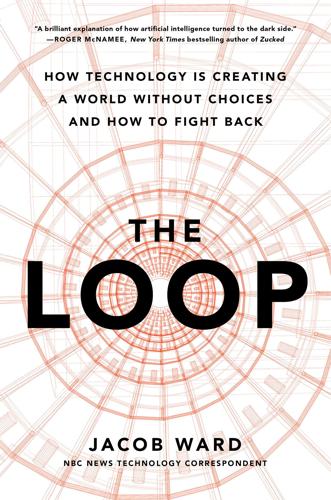
The Loop: How Technology Is Creating a World Without Choices and How to Fight Back
by
Jacob Ward
Published 25 Jan 2022
And now that we’re speeding along, generations later, under the power of our ancient in-group/out-group tendencies, we’re adding the accelerants of media and technology and capitalism. IN THE MODERN landscape of information, in which companies make money the longer we remain on their platforms, and in which they hand us content that’s been curated by recommendation algorithms and dressed up by “user experience” designers, our ancient instincts are being strummed for maximum resonance. Experts have talked for years about the radicalizing effects of social media, the way that it can amplify our grouping tendencies, but I’ve always naively assumed that to be something that happens only to people without the necessary presence of mind to see things clearly.
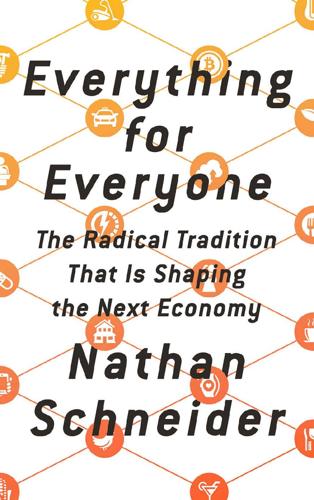
Everything for Everyone: The Radical Tradition That Is Shaping the Next Economy
by
Nathan Schneider
Published 10 Sep 2018
Practices of “education, training, and information” happen around platforms, too—whether in online forums and in-person meetups—resembling the kind of mutual education that cooperatives might encourage among members. The resonance, however, only goes so far. Cooperative principles two and three—democratic governance and ownership, crucially—are absent from the dominant platforms. Online user-experience design seeks to divert users’ attention from matters of governance and ownership, such as by rendering opaque how apparently free services squeeze out revenue. Consultation with users on changes to features or policies is superficial, when it happens at all. In place of meaningful self-governance, the internet has hackers.

Driverless: Intelligent Cars and the Road Ahead
by
Hod Lipson
and
Melba Kurman
Published 22 Sep 2016
Adding to the speculation, in a recent speech at a tech conference, Apple vice president Jeff Williams cryptically described cars as “the ultimate mobile device.”2 In response, car companies are pouring billions of dollars into software development and the epicenter of automotive innovation has moved from Detroit to Silicon Valley. At the time this book was written, Mercedes-Benz’s Silicon Valley Division employed nearly 300 people working on advanced engineering projects and user experience design. Volkswagen had 140 engineers, social scientists, and product designers integrating Google Earth maps into Audi’s navigation system and developing new infotainment systems.3 Toyota announced that it would invest $1 billion over the next several years in artificial-intelligence research, with a laboratory near Stanford and another in Massachusetts, near MIT.
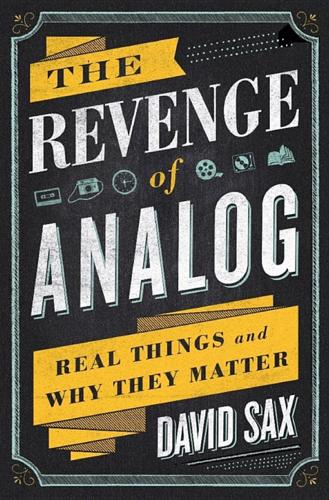
The Revenge of Analog: Real Things and Why They Matter
by
David Sax
Published 8 Nov 2016
The Empathy Toy included teaching guides, sample games, and case studies to direct educators in potential uses, but in the end everyone adapted the toy to their own needs. A second grade teacher used it to teach students STEM concepts; a guidance counselor had deployed it to discuss emotions with troubled students; a business school professor taught leadership with it. Computer coding, website-user-experience design, language, literacy, ESL, occupational therapy, global health crisis management . . . the list of educational applications for the Empathy Toy was constantly growing. One fourth grade teacher used it to teach students what it must have been like for European settlers and Native Americans to try to communicate initially without a common language.
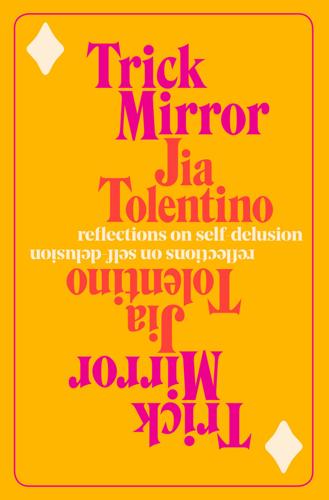
Trick Mirror: Reflections on Self-Delusion
by
Jia Tolentino
Published 5 Aug 2019
If you found something you liked, if you wanted to spend more time in any of these neighborhoods, you could build your own house from HTML frames and start decorating. This period of the internet has been labeled Web 1.0—a name that works backward from the term Web 2.0, which was coined by the writer and user-experience designer Darcy DiNucci in an article called “Fragmented Future,” published in 1999. “The Web we know now,” she wrote, “which loads into a browser window in essentially static screenfuls, is only an embryo of the Web to come. The first glimmerings of Web 2.0 are beginning to appear….The Web will be understood not as screenfuls of texts and graphics but as a transport mechanism, the ether through which interactivity happens.”

The Big Nine: How the Tech Titans and Their Thinking Machines Could Warp Humanity
by
Amy Webb
Published 5 Mar 2019
Instead, our freedom to choose is restricted in ways no one imagined. 2029: Learned Helplessness The two-OS system has resulted in sharp competition among those in AI’s tribes, who didn’t plan ahead for vast interoperability issues. Because it turns out that in addition to hardware, in the two-OS system, people aren’t interoperable either. The transience that was once a hallmark of Silicon Valley—engineers, operations managers, and user experience designers used to migrate from company to company without any real sense of allegiance—is long gone. Rather than bringing us together, AI has effectively and efficiently split us all apart. It’s a pain point for the US government too, which itself has been forced to choose a framework. (Like most other governments, the United States went with Applezon over Google, because Applezon offered cheaper pricing and bundled in discounted office supplies).

The Stack: On Software and Sovereignty
by
Benjamin H. Bratton
Published 19 Feb 2016
To the consternation of suspicious persons, the “mobile phone” with a CCD (charge-coupled device) absorbing light and a microphone absorbing sound waves is also a sensor, and for it the principle of information by absence of interaction holds true. One sensor makes use of the information haul of another, such as an autonomous vehicle that can navigate terrain based on LiDAR mapping (a portmanteau of “laser” and “radar”), motion detection sensors, and street maps (among other sensors). Ultimately, as a User experience design problem, the sense of a device's relative autonomy and intelligence will be a key criterion in everyday HRI (human-robotics interaction) but is a separate issue from the actual autonomy or dependence of that device. Interfaces may sustain and nudge Users toward systemically optimal interactions, but for The Stack-to-come, the nudging must work both ways.76 No platform can only anticipate how Users will make use of it.
…
This collapse of the metaphorical space between perceived object and its interpretation, especially when paired with messianic political theologies, can engender forms of cognitive fundamentalism Interfacial Regime/Interfacial Totalities Particular platforms support multiple touchpoints coordinating interactions across their service offering, and in doing so, they provide a coherent and complete array of interfaces at multiple scales. The coordination of this array is recognized as a key aspect of user experience design, and ultimately, that experience becomes more coherent as it becomes more complete. That coherence defines one interfacial regime in relation to another. Unlike other geographic projections, the interface is not only a visual representation of an aspirational totality; it is an image of a totality that when acted on also instrumentally affects the world.
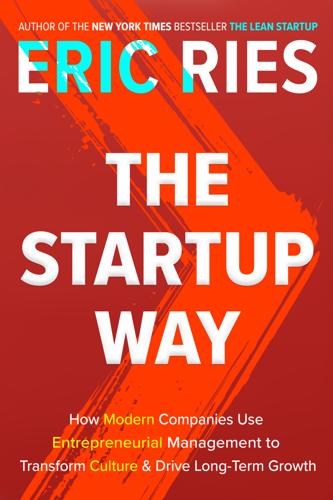
The Startup Way: Making Entrepreneurship a Fundamental Discipline of Every Enterprise
by
Eric Ries
Published 15 Mar 2017
Laura also works as a consultant with product managers, designers, or entrepreneurs struggling to make decisions about what to build next in order to deliver value to your customers. Users Know: usersknow.com. Or listen to her podcast, if you enjoy listening to people argue over the details of user experience design. Liker, Jeffrey K. The Toyota Way: 14 Management Principles from the World’s Greatest Manufacturer. New York: McGraw-Hill, 2004. Maurya, Ash. Scaling Lean: Mastering the Key Metrics for Startup Growth. New York: Portfolio, 2016. Ash Maurya has been an entrepreneur for more than a decade, and throughout that time he has been in search of a better, faster way for building successful products.

The Smart Wife: Why Siri, Alexa, and Other Smart Home Devices Need a Feminist Reboot
by
Yolande Strengers
and
Jenny Kennedy
Published 14 Apr 2020
76 Weizenbaum was surprised and later dismayed to discover how intimately his colleagues related to ELIZA, and the emotional connections they quickly formed with this artificial therapist.77 So deep are these ties to inanimate objects that some people even marry them, like Erika Eiffel nee LaBrie, who married the Eiffel Tower.78 Indeed, according to the late Clifford Nass and his collaborator Corina Yen, experts in the fields of human-computer interaction and user experience design, the success and failure of interactive computer systems depends on whether we like them, and how well they treat us.79 This is partly because people have a tendency to humanize devices and assign them with genders, even when they don’t have one. Sherry Turkle, a professor of social studies of science and technology, has pioneered research on people’s relationships with technology—especially mobile technology, social networking, and sociable robotics.

Super Thinking: The Big Book of Mental Models
by
Gabriel Weinberg
and
Lauren McCann
Published 17 Jun 2019
In the early 1950s, psychologists William Hick and Ray Hyman separately conducted a number of experiments to try to quantify the mathematical relationship between the number of choices given and how long it takes to decide. They found that a greater number of choices increased the decision time logarithmically, in a formulation now known as Hick’s law. Hick’s law is regularly cited as an important factor in user-experience designs, such as in the design of restaurant menus, website navigation, and forms (offline or online). For instance, on a menu, having a vegetarian section allows vegetarians to efficiently narrow the sections of the menu they should read through. Being able to determine quickly whether there are enough vegetarian options on a menu might be a big factor in whether a family with a vegetarian would choose to eat at your restaurant.
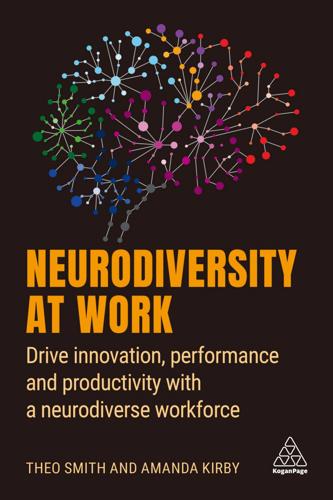
Neurodiversity at Work: Drive Innovation, Performance and Productivity With a Neurodiverse Workforce
by
Amanda Kirby
and
Theo Smith
Published 2 Aug 2021
He works in the user experience and design team in Salford in the northwest. He’s also one of the BBC’s neurodiversity leads working on the BBC Cape initiative, which stands for ‘Creating A Positive Environment’. Leena works alongside Sean on the BBC’s diversity initiative. She’s also a user experience designer for the BBC’s user experience and design team. Leena describes herself as on the autism spectrum and is also ADHD and identifies as being neurodivergent. They recall that at the beginning of their journey, no one really knew much about neurodiversity. It was a relatively new concept at the time, especially when Leena started at the BBC: ‘When I started talking to Sean about it, who was my line manager, he wasn’t familiar with it himself.’
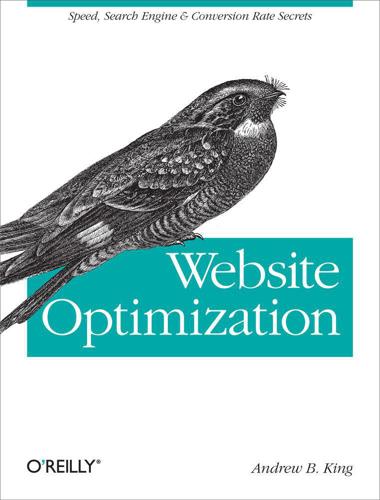
Website Optimization
by
Andrew B. King
Published 15 Mar 2008
Sistrix found that keywords in h1 headers did not correlate with higher rankings, but having keywords in h2–h6 headers did correlate. In German. [28] Sistrix. "Google Ranking Factors." Sistrix found that keywords in hostnames correlated with higher rankings in SERPs, especially for positions 1 to 5. [29] Morville, P. June 21, 2004. "User Experience Design." Semantic Studios, http://www.semanticstudios.com/publications/semantics/000029.php (accessed February 9, 2008). Figure 1-13 used by permission. [30] Spenser, S. July 23, 2007. "Underscores are now word separators, proclaims Google." CNET, http://www.cnet.com/8301-13530_1-9748779-28.html (accessed March 21, 2008).
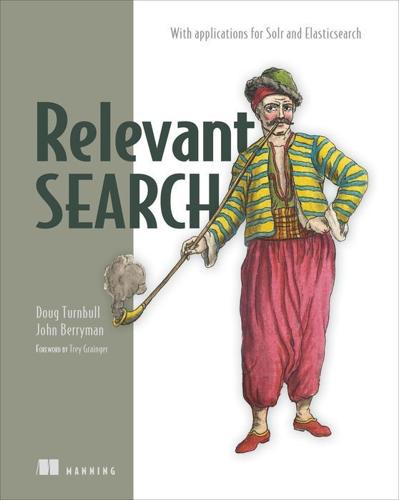
Relevant Search: With Examples Using Elasticsearch and Solr
by
Doug Turnbull
and
John Berryman
Published 30 Apr 2016
term offsets term positions term query term specificity term-centric search albino elephant example combining field-centric search and combining greedy search and conservative amplifiers like fields precision vs. recall defined field synchronicity need for overview, 2nd query parsers ranking function signal discordance avoiding combining fields into custom all fields mechanics of query parsers and solving with cross_fields search Solr tuning terms aggregation, 2nd, 3rd term_vector test-driven relevance, 2nd, 3rd, 4th text analysis, 2nd text field text tokenization text-relevance scores text_all field text_standard_clone TF (term frequency) ignoring when ranking overview, 2nd TF × IDF scoring, 2nd, 3rd, 4th, 5th thrashing tie_breaker parameter, 2nd time on page title phrases title score title-based completions title_exact_match title:with clause TMDB (The Movie Database) crawling API example search application indexing to Elasticsearch multifield search setting API key and loading IPython notebook setting up for API tmdb index tmdb_api_key TMDB_API_KEY variable tmdb.json file, 2nd tokenization, 2nd tokenizers, 2nd tokens, 2nd as document features matching process meaning of documents creation of delimiters acronyms modeling specificity phone numbers synonyms tokenizing geographic data tokenizing integers tokenizing melodies filtering matching overview, 2nd, 3rd precision and recall analysis for by example multiple search terms and multiple fields phonetic tokenization scoring strength of feature in single field top_hits aggregation top_score field transform function trustworthiness score tuned recency boost tuning term-centric search tweaking weights two field groupings two-word pairs two-word subphrases U unstemmed usability testing user behavior anticipating personalizing search based on collaborative filtering tying behavior information back to search index user experience, designing user information user intent anticipating overview user preference group user profiles, personalizing search based on gathering profile information tying profile information back to search index user rating field, 2nd user-focused culture, 2nd user’s ratings user_input variable users_who_might_like field UTF-8 binary strings V value rating scale VD vector vector-space model vote_average field, 2nd VQ vector W web search, 2nd weight behavior of signal weights computing with TF x IDF whistle encoder white bars whitespace tokenization Williams, Chuck winner-takes-all search winning field score with token, 2nd with_positions_offsets word endings word position Word2vec algorithm word_delimiter filter wrapping queries X x-axis Y Yowl application example deploying designing improving information and requirements gathering law of diminishing returns monitoring Z Z-encoding List of Figures Chapter 1.

Radical Technologies: The Design of Everyday Life
by
Adam Greenfield
Published 29 May 2017
India’s patriarchal culture has produced a staggering gender gap in mobile access: some 28 percent of Indian women have a personal device, compared to 43 percent of Indian men; Eric Bellman and Aditi Malhotra, “Why the Vast Majority of Women in India Will Never Own a Smartphone,” Wall Street Journal, October 13, 2016. 13.Cary Stothart, Ainsley Mitchum and Courtney Yehnert, “The Attentional Cost of Receiving a Cell Phone Notification,” Journal of Experimental Psychology: Human Perception and Performance, June 29, 2015. 14.Google, “Understanding Consumers’ Local Search Behavior,” May 2014, think.storage.googleapis.com/docs/how-advertiserscan-extend-their-relevance-with-search_research-studies.pdf. 15.Winston Churchill, “House of Commons Rebuilding,” Hansard, October 28, 1943, hansard.millbanksystems.com/commons/1943/oct/28/house-of-commons-rebuilding. 16.Will Worley, “Syrian Woman Explains Why Refugees Need Smartphones,” Independent, May 12, 2016. 2The internet of things 1.Mike Kuniavsky, Smart Things: Ubiquitous Computing User Experience Design, Burlington, MA: Elsevier, 2010. 2.See quantifiedself.com 3.Ahnjili Zhuparris, “Menstrual Cycles, 50 Cent and Right Swipes,” QSEU15 Conference, September 24, 2015, vimeo.com/151149664. 4.Jeff Sparrow, “Soylent, Neoliberalism and the Politics of Life Hacking,” CounterPunch, May 19, 2014. counterpunch.org/2014/05/19/solyent-neoliberalism-and-the-politics-of-life-hacking/ 5.Beth Mole, “Want an Apple Watch?
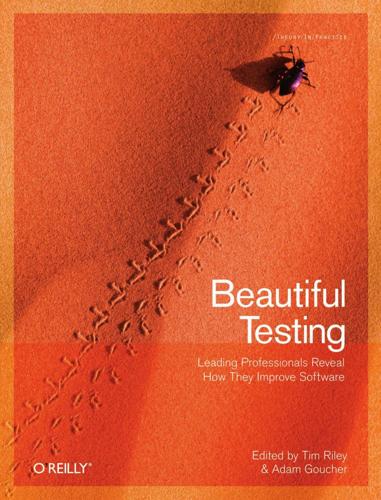
Beautiful Testing: Leading Professionals Reveal How They Improve Software (Theory in Practice)
by
Adam Goucher
and
Tim Riley
Published 13 Oct 2009
The callout notes highlight opportunities for proactive and continuous quality, encompassing all process steps and multiple team roles in close collaboration: 192 CHAPTER FOURTEEN Analyze Writing and automating Examples requires collaboration between a multitude of roles, each providing a different perspective and skill: subject matter expert, business analyst, tester, toolsmith, technical writer, and user experience designer. Design Developers and testers collaborate closely during unit test-driven development. The testable design makes automated, semi-automated, and manual testing highly effective and efficient; nothing should be difficult to test. Develop The automated test suite is run frequently during development to ensure that no unexpected side effects were introduced by an incremental change or code refactoring step.
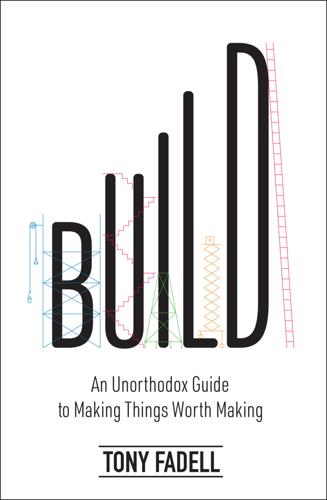
Build: An Unorthodox Guide to Making Things Worth Making
by
Tony Fadell
Published 2 May 2022
In the interest of eliminating the confusion around what PM stands for, let’s use the following abbreviations: PdM = Product manager PjM = Project manager PgM = Program manager * * * When yet another CEO tells me they have no idea what a product manager does, it always makes me think of design in the eighties. Because most tech companies in the eighties didn’t have designers. Things were obviously designed and those designs were just as critical as they are today, but nobody employed designers to architect the user experience. Designing meant making something look nice, and that just happened as you developed the product—a mechanical engineer would draw something up, or if you wanted to get fancy, you’d outsource those drawings to an agency. There was no school for design. No formal training. And any designers who managed to get hired were second-class citizens.
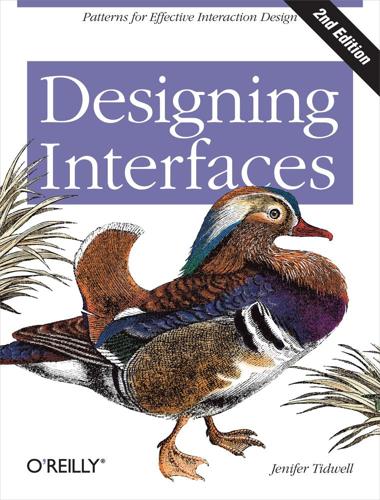
Designing Interfaces
by
Jenifer Tidwell
Published 15 Dec 2010
For instance: Finding some fact or object Learning something Performing a transaction Controlling or monitoring something Creating something Conversing with other people Being entertained Well-known idioms, user behaviors, and design patterns can support each of these abstract goals. User experience designers have learned, for example, how to help people search through vast amounts of online information for specific facts. They’ve learned how to present tasks so that it’s easy to walk through them. They’re learning ways to support the building of documents, illustrations, and code. The first step in designing an interface is to figure out what its users are really trying to accomplish.
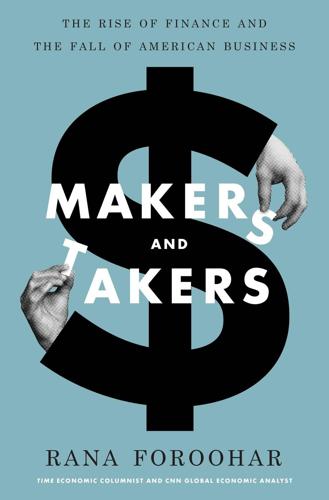
Makers and Takers: The Rise of Finance and the Fall of American Business
by
Rana Foroohar
Published 16 May 2016
Designs will be altered in real time to reflect the knowledge. But while all this technology in Schenectady has reduced the number of machinists needed to make a battery, it has also fueled the creation of a GE global research center in San Ramon, California. The center now employs more than one thousand software engineers, data scientists, and user-experience designers who are well paid to develop the software for that kind of industrial Internet—otherwise known as the Internet of things. GE plans to hire thousands more such employees within the next half-decade. “We are probably the most competitive, on a global basis, that we’ve been in the past 30 years,” in terms of being able to make things again in the United States, says CEO Jeffrey Immelt.
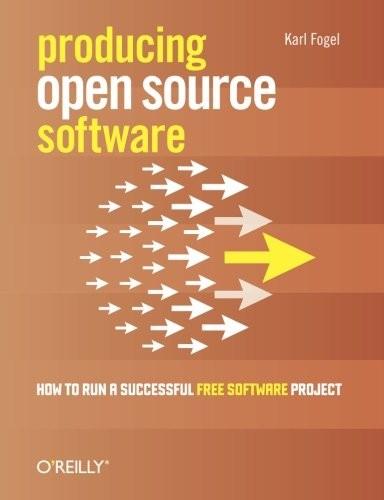
Producing Open Source Software: How to Run a Successful Free Software Project
by
Karl Fogel
Published 13 Oct 2005
Naturally, one thing many companies think of when they want to help improve an open source project is to fund UX work, since that's just the sort of thing that projects often overlook or, in some cases, don't even know they need. As with many other types of engagement, do not assume that a UX expert can be parachuted into the project. User experience design is not a checkbox. It is an attitude taken by a team throughout development, and one of the primary qualifications to look for in UX contractors is their ability to gain long-term credibility with the developers, and to help developers pay attention to user experience goals. For example, in addition to their innate domain knowledge, UX designers often know how to set up and incorporate feedback from user trials — but those trials will only be effective if the results are presented to the development team in a way that makes it easy for the developers to take the results seriously.

Advertisers at Work
by
Tracy Tuten
Published 28 May 2012
6 Boches: Well, I don’t know if they need to be creative technologists. I think what they [each] need to do is have a specific skill and have it really well developed. They could be a writer. They could be an art director. They could be a designer. They could be a developer. They could be a UX [user experience design] person. They could be a videographer. All of those skills are still completely and totally necessary. The difference in the future is that you need to have a much broader perspective than just your specific skills. So you’ve probably heard of the expression, “T-shaped person,” which is almost becoming a cliché.7 Look at any project these days—whether it’s Nike Plus or Garmin Connect or a Facebook app, or a mobile game, or a social experience, whatever kind of project that you look at—the team that makes that stuff now is much broader than it used to be.
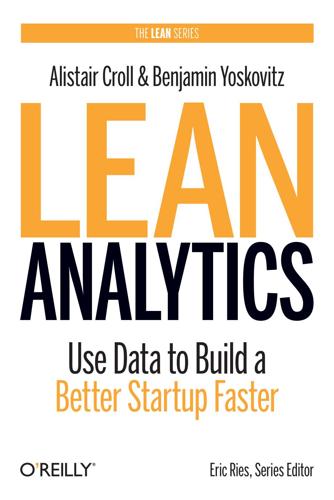
Lean Analytics: Use Data to Build a Better Startup Faster
by
Alistair Croll
and
Benjamin Yoskovitz
Published 1 Mar 2013
The “day in the life” exercise is a way of describing a very detailed, human use case for your solution that goes beyond simply defining target markets and customer segments. After all, you’ll be selling to people. You need to know how to reach them, interrupt them, and make a difference in their lives at the exact moment when they need your solution. Figure 15-1. How HighScore House mapped the chaos of parenting User experience designers also rely on mental models of their users to understand how people think about something. A mental model is simply the mental representation of something in the real world—often a simplified version of reality that helps someone work with a thing. Sometimes these are metaphors—the recycle bin on a computer, for example.
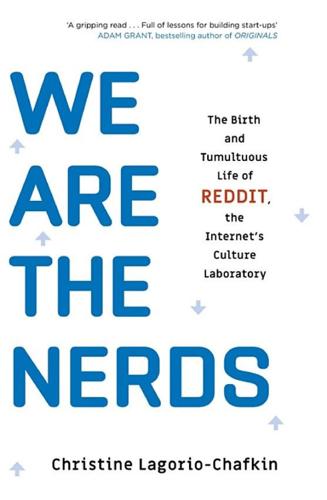
We Are the Nerds: The Birth and Tumultuous Life of Reddit, the Internet's Culture Laboratory
by
Christine Lagorio-Chafkin
Published 1 Oct 2018
In what’s now a staple of even Reddit’s most corporate presentations, it opened with self-deprecating humor. “So, Reddit has designers?” The team focused on three primary areas: visual and brand design, which includes the site’s logo and Snoo’s look; user experience research, which figures out how a variety of individuals navigate Reddit’s site and app; and user experience design, which seeks to make the experience of using Reddit more intuitive. Old was out, except when it came to users. The design team couldn’t risk pissing off old users. In designer speak, this is called “preserving the spirit,” and as Rush explained, when it came to Reddit, it mandated that the designers not touch the comment structure or left-hand-side voting.
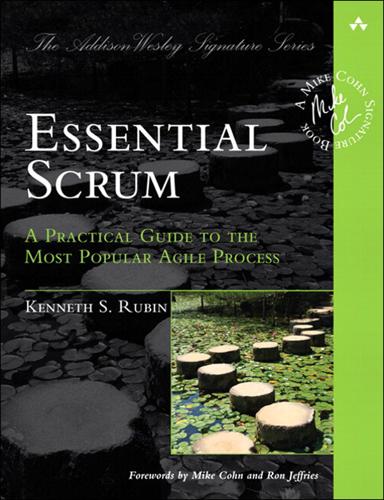
Essential Scrum: A Practical Guide to the Most Popular Agile Process
by
Kenneth S. Rubin
Published 19 Jul 2012
Participants The product owner is the only required participant during initial envisioning. Normally, though, the product owner oversees an initial envisioning that includes one or more internal stakeholders, who collaborate with the product owner to perform the envisioning work. In addition, specialists in areas such as market research, business-case development, user-experience design, and systems architecture frequently participate in various envisioning tasks as well. Figure 17.2 illustrates the envisioning activity (optional participants and artifacts are indicated with dashed outlines). Figure 17.2. Envisioning (product-planning) activity Ideally, the ScrumMaster and the development team that will be performing the customer-value-creation sprints will also participate in initial envisioning, lending valuable feedback to the product vision and also eliminating the need to hand off the vision to another team to build the product.
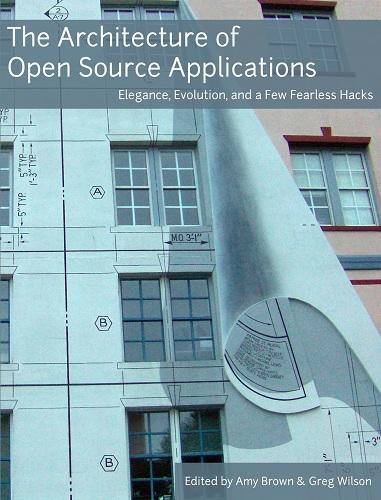
The Architecture of Open Source Applications
by
Amy Brown
and
Greg Wilson
Published 24 May 2011
According to Brooks, the formulation of such a coherent design concept is best kept in a single person's mind: Since conceptual integrity is the most important attribute of a great design, and since that comes from one or a few minds working uno animo, the wise manager boldly entrusts each design task to a gifted chief designer. In the case of SocialCalc, having Tracy Ruggles as our chief user-experience designer was the key for the project to converge toward a shared vision. Since the underlying SocialCalc engine was so malleable, the temptation of feature creep was very real. Tracy's ability to communicate using design sketches really helped us present features in a way that feels intuitive to users. 19.8.2.
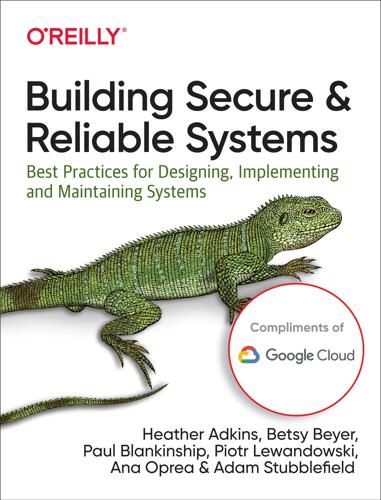
Building Secure and Reliable Systems: Best Practices for Designing, Implementing, and Maintaining Systems
by
Heather Adkins
,
Betsy Beyer
,
Paul Blankinship
,
Ana Oprea
,
Piotr Lewandowski
and
Adam Stubblefield
Published 29 Mar 2020
You might consider mitigating that risk by sandboxing payment-related functionality in a separate web origin or sandboxed iframe. However, this tactic means that you need a secure cross-origin communications mechanism, again introducing complexity and additional failure modes. Alternatively, the payment vendor might offer an integration based on HTTP redirects, but this can result in a less smooth user experience. Design choices related to nonfunctional requirements can have fairly far-reaching implications in areas of domain-specific technical expertise: we started out discussing a tradeoff related to mitigating risks associated with handling payment data, and ended up thinking about considerations that are deep in the realm of web platform security.